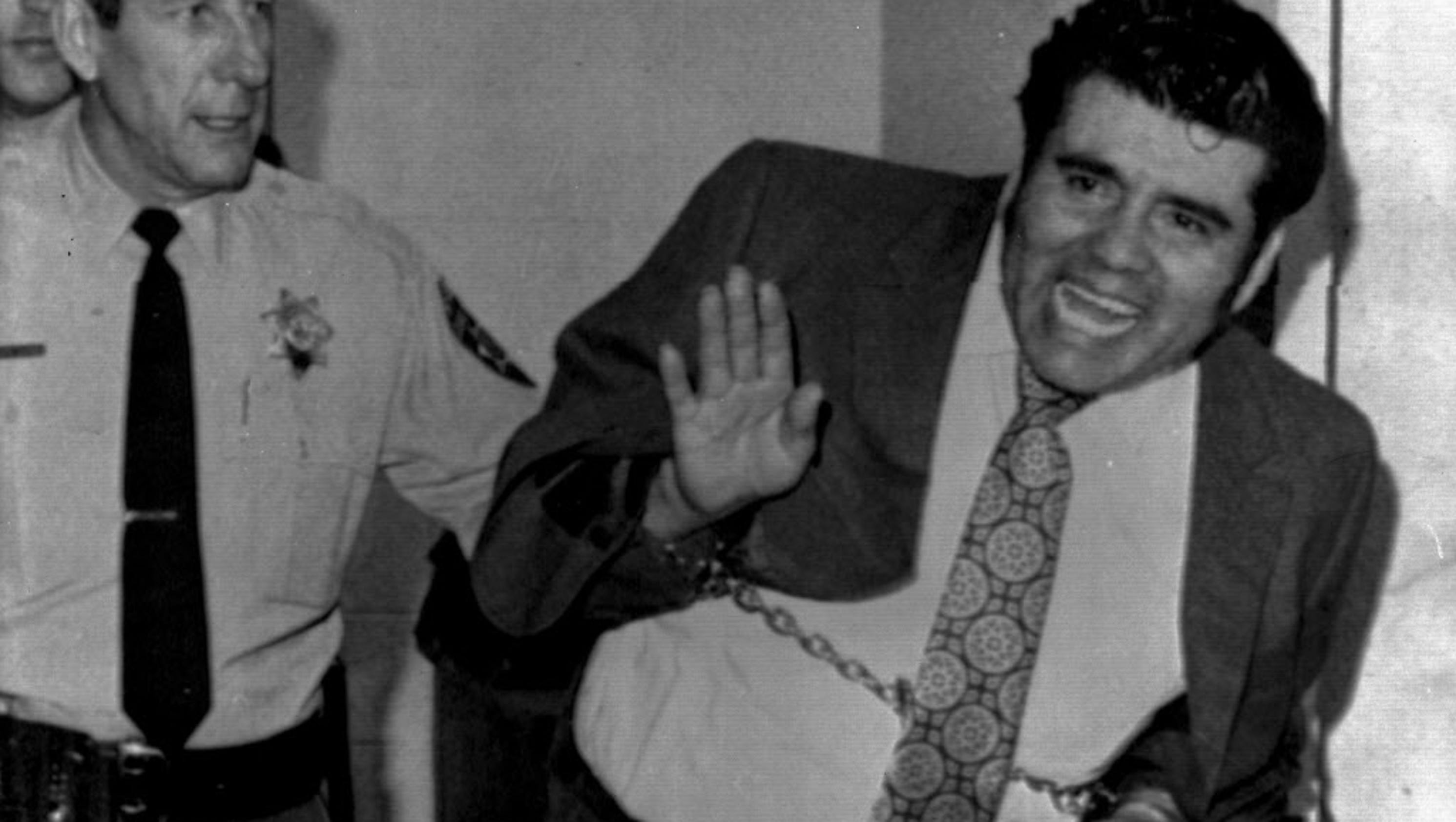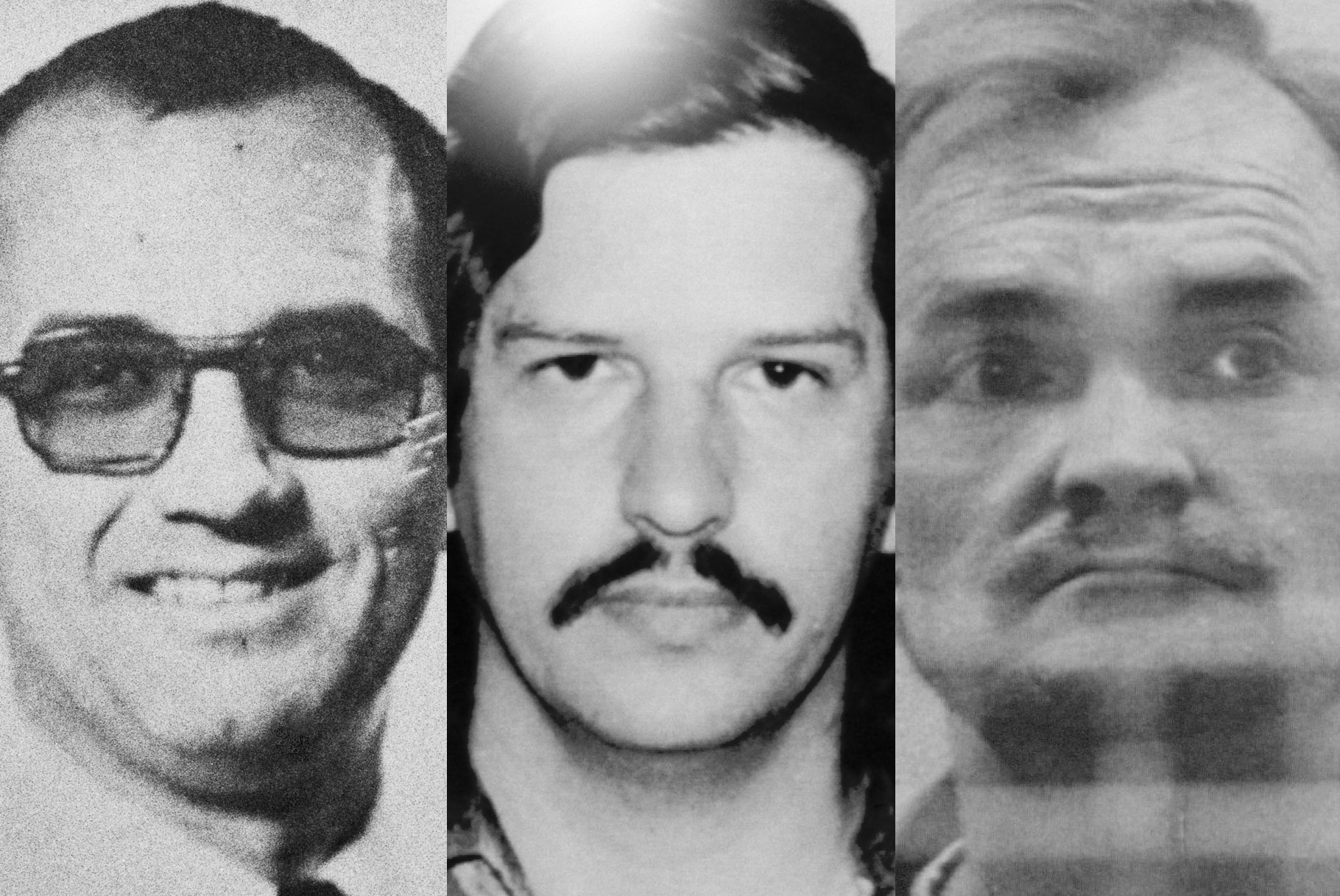The Biggest Serial Killer Of All Time: A Chilling Exploration
When we talk about the biggest serial killer of all time, we’re diving into a dark and twisted chapter of human history. This isn’t just about numbers or records; it’s about understanding the psychology, motivations, and impact of individuals who’ve left an indelible mark on society—often in the worst possible ways. From their early lives to their heinous acts, these stories are both horrifying and strangely fascinating. So, buckle up because this ride is going to be heavy, but trust me, it’s worth it.
Now, you might be wondering why anyone would want to delve into such grim territory. Well, the truth is, learning about the darkest aspects of human nature helps us better understand how to prevent these horrors from happening again. It’s not just about morbid curiosity; it’s about education, awareness, and maybe even redemption for those who study these cases. And hey, if you’re here, chances are you’re already intrigued. Let’s dive in, shall we?
Before we get started, I want to make one thing crystal clear: what we’re about to explore isn’t pretty. We’re talking about some of the most notorious figures in history, people whose actions have left scars that will never fully heal. But don’t worry—I’ll keep things engaging, maybe even throw in a joke or two where appropriate. After all, life’s too short to take everything too seriously, right?
- Amy Winehouse And Husband The Untold Story Of Love Struggles And Legacy
- Who Is The Actor That Plays Christian Grey A Comprehensive Look Into His Life Career And Impact
Who Is the Biggest Serial Killer of All Time?
If you’ve ever found yourself scrolling through crime documentaries or binge-watching true crime series, you’ve probably come across names like Ted Bundy, Jeffrey Dahmer, or Charles Manson. But while these killers are infamous, they don’t hold the top spot when it comes to body counts. So, who exactly takes the crown as the biggest serial killer of all time? Drumroll, please…
The answer might surprise you—or maybe not, depending on how deep your knowledge of global history goes. The title belongs to a man named Joseph Stalin. Yes, you read that right. While he’s often remembered as a political leader rather than a serial killer, his actions during his reign in the Soviet Union resulted in millions of deaths. Estimates vary, but historians agree that anywhere from 20 million to 60 million people perished under his rule due to purges, forced labor, and man-made famines.
Why Is Stalin Considered a Serial Killer?
At first glance, labeling Stalin as a serial killer might seem like a stretch. After all, he wasn’t out there with a knife or gun, personally killing each of his victims. However, the definition of a serial killer extends beyond just physical acts of violence. It includes systematic efforts to eliminate large numbers of people over an extended period. In Stalin’s case, his policies and decisions directly led to the deaths of millions.
- George Peterson Lauri The Unsung Hero Of Modern Entrepreneurship
- Michael Landons Legacy The Untold Story Of His Passing
- Purges: Stalin’s Great Purge targeted political opponents, intellectuals, and anyone he perceived as a threat. Thousands were executed or sent to labor camps.
- Forced Labor: Gulags, or Soviet labor camps, claimed countless lives. Prisoners were subjected to brutal conditions, starvation, and exhaustion.
- Famine: The Holodomor, a man-made famine in Ukraine during the early 1930s, resulted in the deaths of millions. Stalin’s collectivization policies and forced requisition of grain left entire populations starving.
So, while Stalin didn’t pull the trigger himself, his role in orchestrating these atrocities firmly places him in the annals of history as the biggest serial killer of all time.
A Brief Biography of Joseph Stalin
Before we dive deeper into his crimes, let’s take a step back and explore the man behind the moniker. Who was Joseph Stalin, and how did he become one of the most powerful—and deadliest—figures in history?
| Name | Joseph Stalin |
|---|---|
| Birth Name | Losif Vissarionovich Dzhugashvili |
| Date of Birth | December 18, 1878 |
| Place of Birth | Gori, Georgia (then part of the Russian Empire) |
| Date of Death | March 5, 1953 |
| Occupation | General Secretary of the Communist Party of the Soviet Union |
Stalin’s rise to power was anything but straightforward. Born into poverty in Georgia, he initially pursued a career in the priesthood before turning to revolutionary politics. His involvement with the Bolsheviks eventually led him to become a key player in the Russian Revolution of 1917. By the 1920s, he had maneuvered his way to the top, consolidating power and eliminating rivals through a combination of charisma, cunning, and ruthlessness.
Early Life: From Seminary Dropout to Revolutionary
Stalin’s early years paint a picture of a man driven by ambition and a desire to escape his humble beginnings. Growing up in a small town, he faced numerous challenges, including a difficult relationship with his abusive father and a childhood bout with smallpox that left him with lifelong scars. Despite these obstacles, he excelled academically, earning a scholarship to attend the Tbilisi Spiritual Seminary.
However, it wasn’t long before Stalin became disillusioned with religion and turned his attention to Marxist ideology. He dropped out of the seminary and began working as a revolutionary activist, organizing strikes and distributing propaganda. His dedication to the cause quickly earned him a reputation within the Bolshevik movement, setting the stage for his future ascent.
Other Notable Serial Killers in History
While Stalin holds the dubious distinction of being the biggest serial killer of all time, he’s far from the only one worth mentioning. Throughout history, there have been countless individuals whose actions have shocked and horrified the world. Let’s take a look at a few of the most infamous.
H.H. Holmes: The First Modern Serial Killer
Often referred to as America’s first serial killer, H.H. Holmes operated in the late 19th century. His victims numbered at least 27, though some believe the true count could be much higher. Holmes lured unsuspecting guests to his “Murder Castle,” a hotel he designed specifically for committing his crimes. Complete with trapdoors, soundproof rooms, and gas chambers, it was a chilling testament to his depravity.
Belle Gunness: The Black Widow of LaPorte
Another American killer, Belle Gunness, earned the nickname “Lady Bluebeard” for her habit of marrying wealthy men before murdering them and collecting their life insurance policies. Estimates suggest she killed anywhere from 40 to 100 people, including her own children. Her case remains one of the most baffling in U.S. history, as her own death—or disappearance—has never been conclusively proven.
Psychology of Serial Killers
What drives someone to become a serial killer? While there’s no single answer, researchers have identified several common traits among these individuals. Many exhibit signs of personality disorders, such as antisocial personality disorder or narcissism. Others may have suffered trauma or abuse during childhood, leading to a distorted sense of reality and empathy.
It’s important to note, however, that not everyone who experiences trauma becomes a killer. The intersection of biology, environment, and circumstance creates a complex web that’s difficult to untangle. Still, understanding these factors can help us better recognize warning signs and potentially prevent future tragedies.
Myths About Serial Killers
Pop culture has done a lot to shape our perceptions of serial killers, often perpetuating stereotypes that aren’t entirely accurate. For example, contrary to popular belief, most serial killers aren’t geniuses or master manipulators. Many are surprisingly ordinary, blending into society without raising suspicion. This “normalcy” is part of what makes them so dangerous—they can be anyone, anywhere.
The Impact on Society
The legacy of serial killers extends far beyond their individual victims. Their actions leave lasting scars on communities, families, and even entire nations. In the case of Stalin, his policies not only claimed millions of lives but also shaped the political landscape of the 20th century. The fear and paranoia he instilled in his people lingered long after his death, influencing generations to come.
On a smaller scale, local serial killers can devastate communities, creating an atmosphere of fear and mistrust. Victims’ families are left searching for answers, often without closure. Law enforcement agencies face immense pressure to solve these cases, sometimes at the expense of other investigations.
Preventing Future Atrocities
So, what can we do to prevent these horrors from happening again? Education and awareness are key. By understanding the warning signs and risk factors associated with serial killers, we can potentially intervene before it’s too late. Additionally, fostering empathy and addressing social inequalities can help create a more compassionate and supportive society.
Conclusion: What We Can Learn
In conclusion, exploring the lives and crimes of the biggest serial killers of all time offers valuable insights into the darker aspects of human nature. While it’s easy to dismiss these individuals as monsters, doing so ignores the complex factors that contribute to their actions. By studying their stories, we gain a better understanding of how to prevent similar tragedies in the future.
I hope this article has shed some light on this often-overlooked topic. If you found it interesting, I encourage you to share it with others or leave a comment below. Together, we can continue the conversation and work toward a safer, more informed world. And hey, if you’re still craving more true crime content, be sure to check out our other articles—you won’t be disappointed!
Table of Contents
- Who Is the Biggest Serial Killer of All Time?
- Why Is Stalin Considered a Serial Killer?
- A Brief Biography of Joseph Stalin
- Early Life: From Seminary Dropout to Revolutionary
- Other Notable Serial Killers in History
- H.H. Holmes: The First Modern Serial Killer
- Belle Gunness: The Black Widow of LaPorte
- Psychology of Serial Killers
- Myths About Serial Killers
- The Impact on Society
- Preventing Future Atrocities
- Conclusion: What We Can Learn



Detail Author:
- Name : Emerson Schinner
- Username : hlebsack
- Email : wfarrell@spencer.com
- Birthdate : 1974-11-03
- Address : 6966 Elda Ridge South Jedidiahland, OK 34811
- Phone : +12085343974
- Company : Emard, Erdman and Christiansen
- Job : Recreation and Fitness Studies Teacher
- Bio : Voluptatem quasi voluptatem possimus ducimus laudantium est error aut. Sed in sunt iusto voluptate tenetur. Vel et ut qui dolorem. Perferendis distinctio eligendi cum minus recusandae possimus iure.
Socials
facebook:
- url : https://facebook.com/marvinm
- username : marvinm
- bio : Ad eos qui maiores fuga eius et eos non.
- followers : 3872
- following : 1515
tiktok:
- url : https://tiktok.com/@mylene_real
- username : mylene_real
- bio : Non ut unde at repellendus ad voluptas voluptates.
- followers : 6266
- following : 1836
twitter:
- url : https://twitter.com/marvin2023
- username : marvin2023
- bio : Quia non soluta non est pariatur aperiam quam. Occaecati voluptatem delectus dolor corrupti. Non eligendi nulla quos id quasi cumque perspiciatis saepe.
- followers : 5943
- following : 158